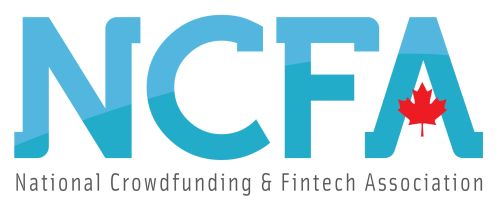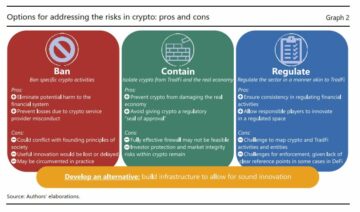Cointelegraph | Nitin Kumar | Feb 28, 2023

Image: Freepik/starline
The concept of Web3 product-market fit is crucial for the success of decentralized applications and platforms in the Web3 ecosystem.
- Web3 platforms can begin their product-market fit journey with the distribution of utility tokens via airdrops or bounties creating a community-operated workforce. Permissionless product innovation, leaderless movements (e.g., Bitcoin) and faceless branding are more nuanced than Web2 traditionalists would care to understand.
- There are six broad and overlapping phases to achieve product-market fit, with key outcomes being the desirability, viability and economic feasibility of the product:
- Progressive decentralization: This is a term coined by Andreessen Horowitz and it talks about three phases: product-market fit by drawing the right initial users even during the time the product is controlled by the founding team, incentivizing more users by turning them into a community and eventually turning operational control and decision making to the community.
- Establish utility: Discovering and establishing utility takes time, experimentation and an iterative process. Early community members prototype use cases and dApps and engineer some utility into the tokens, driving initial growth. When platforms, products or protocols emerge from the early stages, foundational elements of utility must prove themselves and can be measured through various KPIs such as total value locked, developer activity, etc.
See: Tencent’s Finally Marching into Web3
- Momentum: Once the utility is established, it needs to be accelerated. For example, expanded uses cases such as collateralization, flash loans, burning, etc., through adding vectors of token programmability. Some have activated a variety of momentum vectors (e.g., DeFi, gaming, DAOs, etc.), attracting different types of developers who can add multifaceted programmability and utilities for adding momentum.
- Network effect Alpha (Metcalf's law) are the moat of any platform or protocol; they strengthen and accelerate functionalities around the thesis and narratives. Network effects (Metcalfe’s Law) such as more users and more usage
- Network effect beta (Reed’s Law): A strong foundational narrative and functionality will create a thriving ecosystem to manifest Metcalfe’s Law, but if the ecosystem’s value is compelling, they spawn their own ecosystems
- Economic flywheel: Once the power of Metcalfe and Reed’s laws come together, it jumpstarts the economic flywheel which can create exponential growth for the platform or protocol. The more value created by community and ecosystems (dApp development, marketing, core development, etc.), the more the demand for platform usage, development and potentially even higher token prices.
Continue to the full article --> here
 The National Crowdfunding & Fintech Association (NCFA Canada) is a financial innovation ecosystem that provides education, market intelligence, industry stewardship, networking and funding opportunities and services to thousands of community members and works closely with industry, government, partners and affiliates to create a vibrant and innovative fintech and funding industry in Canada. Decentralized and distributed, NCFA is engaged with global stakeholders and helps incubate projects and investment in fintech, alternative finance, crowdfunding, peer-to-peer finance, payments, digital assets and tokens, blockchain, cryptocurrency, regtech, and insurtech sectors. Join Canada's Fintech & Funding Community today FREE! Or become a contributing member and get perks. For more information, please visit: www.ncfacanada.org
The National Crowdfunding & Fintech Association (NCFA Canada) is a financial innovation ecosystem that provides education, market intelligence, industry stewardship, networking and funding opportunities and services to thousands of community members and works closely with industry, government, partners and affiliates to create a vibrant and innovative fintech and funding industry in Canada. Decentralized and distributed, NCFA is engaged with global stakeholders and helps incubate projects and investment in fintech, alternative finance, crowdfunding, peer-to-peer finance, payments, digital assets and tokens, blockchain, cryptocurrency, regtech, and insurtech sectors. Join Canada's Fintech & Funding Community today FREE! Or become a contributing member and get perks. For more information, please visit: www.ncfacanada.org
Related Posts
- SEO Powered Content & PR Distribution. Get Amplified Today.
- Platoblockchain. Web3 Metaverse Intelligence. Knowledge Amplified. Access Here.
- Source: https://ncfacanada.org/6-phases-of-web3-product-market-fit/
- 2018
- 28
- a
- About
- accelerate
- accelerated
- Achieve
- activity
- affiliates
- Airdrops
- Alpha
- alternative
- and
- Andreessen
- Andreessen Horowitz
- applications
- around
- article
- Assets
- attracting
- become
- being
- beta
- Bitcoin
- blockchain
- bounties
- broad
- cache
- Canada
- care
- cases
- closely
- coined
- come
- community
- compelling
- concept
- control
- controlled
- Core
- create
- created
- Creating
- Crowdfunding
- crucial
- cryptocurrency
- DAOs
- dapp
- DApps
- Decentralization
- decentralized
- Decentralized Applications
- decision
- Decision Making
- DeFi
- Demand
- Developer
- developers
- Development
- different
- digital
- Digital Assets
- discovering
- distributed
- distribution
- drawing
- driving
- during
- Early
- Economic
- ecosystem
- ecosystem’s value
- Ecosystems
- Education
- effect
- effects
- elements
- engaged
- engineer
- established
- establishing
- etc
- Ether (ETH)
- Even
- eventually
- example
- expanded
- exponential
- faceless
- Finally
- finance
- financial
- fintech
- fit
- Flash
- flash loans
- founding
- from
- full
- functionalities
- functionality
- funding
- gaming
- get
- Global
- Government
- Growth
- helps
- higher
- Horowitz
- HTTPS
- in
- industry
- information
- initial
- Innovation
- innovative
- Insurtech
- Intelligence
- investment
- IT
- Jan
- journey
- Key
- Law
- Laws
- Loans
- locked
- Making
- Market
- Marketing
- max-width
- member
- Members
- Metcalf
- Momentum
- more
- multifaceted
- NARRATIVE
- narratives
- needs
- network
- networking
- operational
- opportunities
- own
- partners
- payments
- peer to peer
- perks
- platform
- Platforms
- plato
- Plato Data Intelligence
- PlatoData
- please
- potentially
- power
- Prices
- process
- Product
- Product Innovation
- product-market-fit
- Products
- projects
- protocol
- protocols
- prototype
- Prove
- provides
- Regtech
- Sectors
- Services
- some
- Spawn
- stages
- stakeholders
- starline
- Stewardship
- strong
- success
- such
- takes
- Talks
- team
- tech
- The
- their
- themselves
- thousands
- three
- thriving
- Through
- time
- to
- today
- together
- token
- Tokens
- Total
- total value locked
- Turning
- types
- understand
- Usage
- use
- users
- utilities
- utility
- value
- variety
- various
- via
- viability
- vibrant
- Web2
- Web3
- Web3 Ecosystem
- which
- WHO
- will
- Workforce
- works
- would
- zephyrnet













